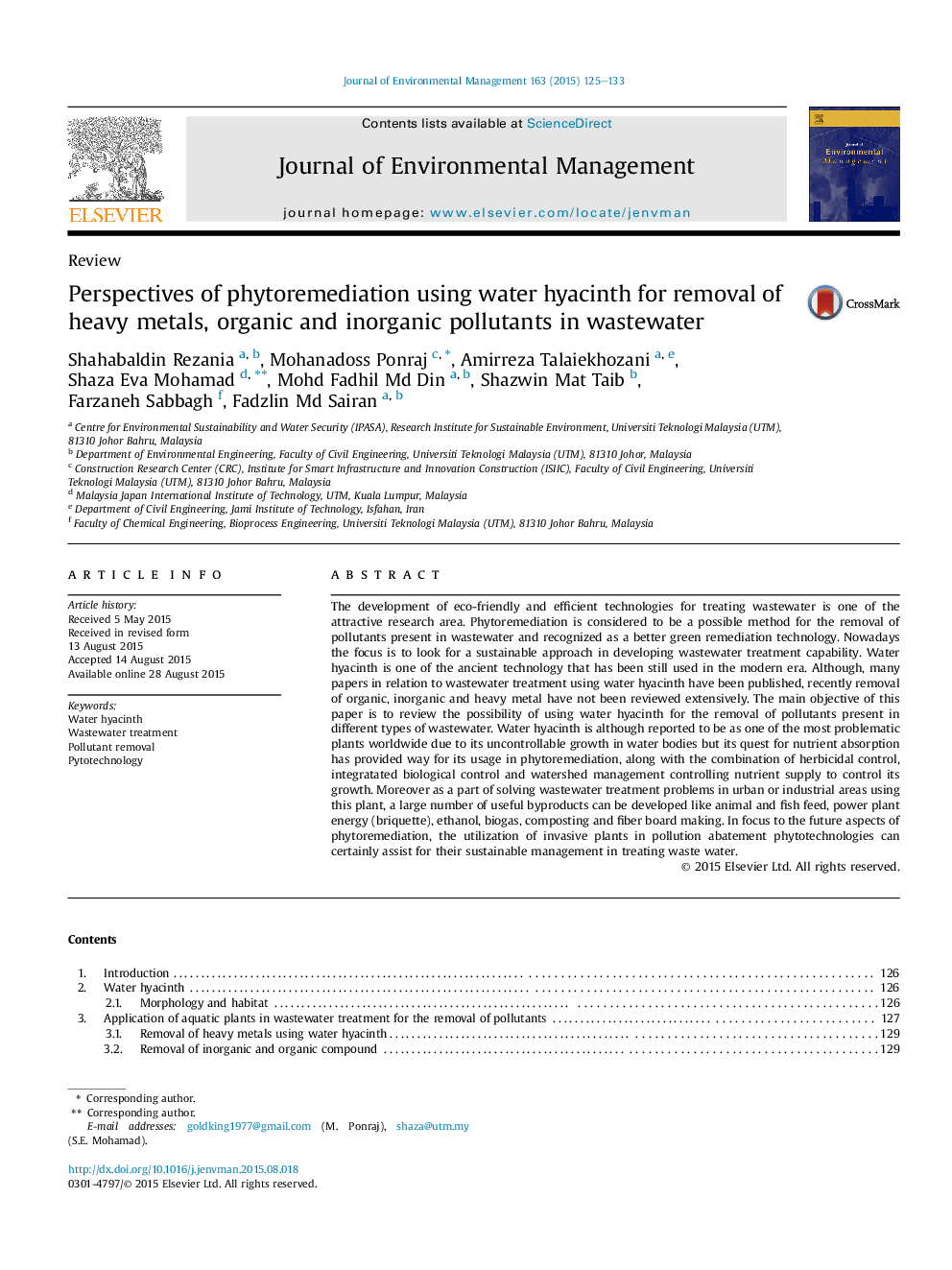| Article ID | Journal | Published Year | Pages | File Type |
|---|---|---|---|---|
| 1055520 | Journal of Environmental Management | 2015 | 9 Pages |
•Removal of nutrient and heavy metals using water hyacinth are reviewed.•Water hyacinth can efficiently treat different types of wastewater.•Pollutant removal efficiency was higher compared to other aquatic plants.•After waste water remediation can be used for wide range of applications.
The development of eco-friendly and efficient technologies for treating wastewater is one of the attractive research area. Phytoremediation is considered to be a possible method for the removal of pollutants present in wastewater and recognized as a better green remediation technology. Nowadays the focus is to look for a sustainable approach in developing wastewater treatment capability. Water hyacinth is one of the ancient technology that has been still used in the modern era. Although, many papers in relation to wastewater treatment using water hyacinth have been published, recently removal of organic, inorganic and heavy metal have not been reviewed extensively. The main objective of this paper is to review the possibility of using water hyacinth for the removal of pollutants present in different types of wastewater. Water hyacinth is although reported to be as one of the most problematic plants worldwide due to its uncontrollable growth in water bodies but its quest for nutrient absorption has provided way for its usage in phytoremediation, along with the combination of herbicidal control, integratated biological control and watershed management controlling nutrient supply to control its growth. Moreover as a part of solving wastewater treatment problems in urban or industrial areas using this plant, a large number of useful byproducts can be developed like animal and fish feed, power plant energy (briquette), ethanol, biogas, composting and fiber board making. In focus to the future aspects of phytoremediation, the utilization of invasive plants in pollution abatement phytotechnologies can certainly assist for their sustainable management in treating waste water.
Graphical abstractFigure optionsDownload full-size imageDownload as PowerPoint slide
